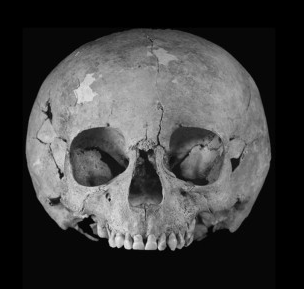New Scientist
The oldest confirmed case of Down’s syndrome has been found: the skeleton of a child who died 1500 years ago in early medieval France. According to the archaeologists, the way the child was buried hints that Down’s syndrome was not necessarily stigmatised in the Middle Ages.
Down’s syndrome is a genetic disorder that delays a person’s growth and causes intellectual disability. People with Down’s syndrome have three copies of chromosome 21, rather than the usual two. It was described in the 19th century, but has probably existed throughout human history. However there are few cases of Down’s syndrome in the archaeological record.
The new example comes from a 5th- and 6th-century necropolis near a church in Chalon-sur-Saône in eastern France. Excavations there have uncovered the remains of 94 people, including the skeleton of a young child with a short and broad skull, a flattened skull base and thin cranial bones. These features are common in people with Down’s syndrome, says Maïté Rivollat at the University of Bordeaux in France, who has studied the skeleton with her colleagues. Read more on newscientist.com…








